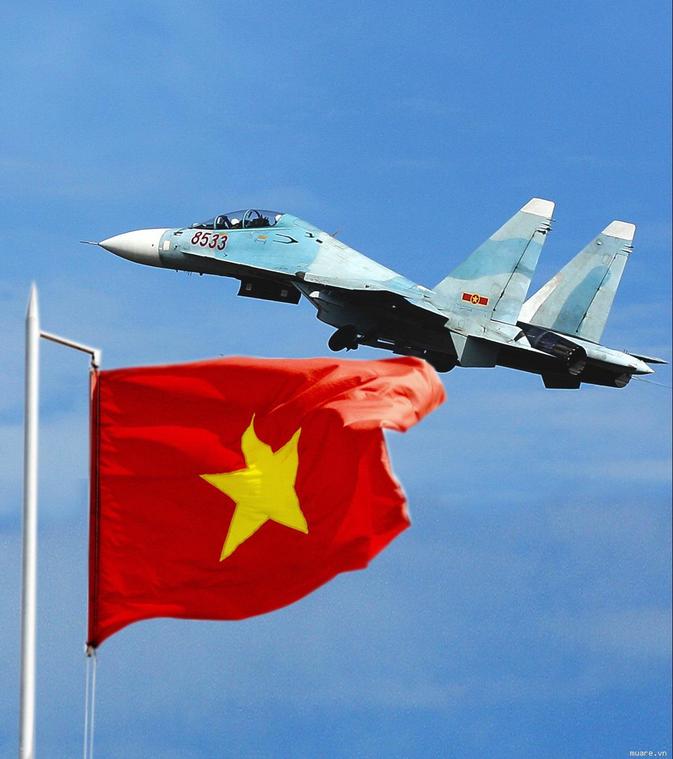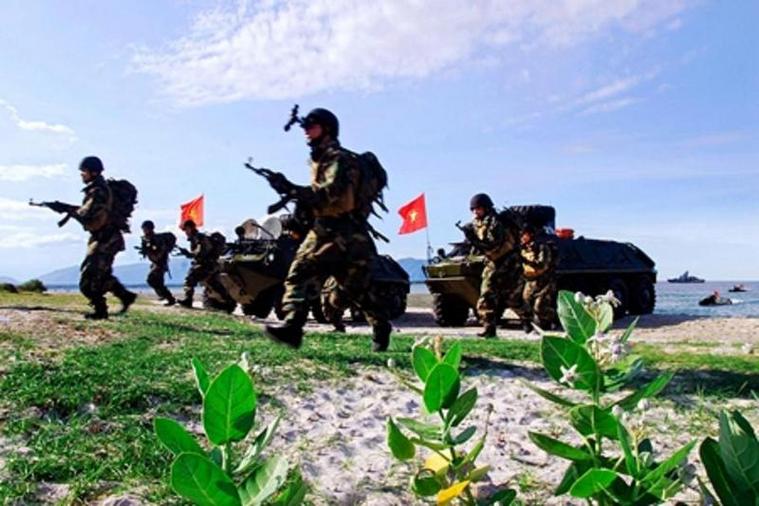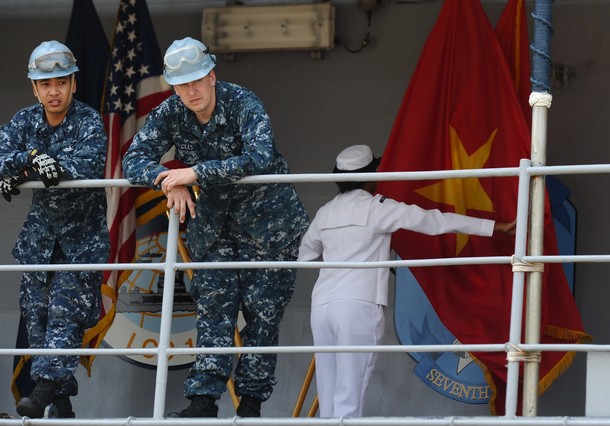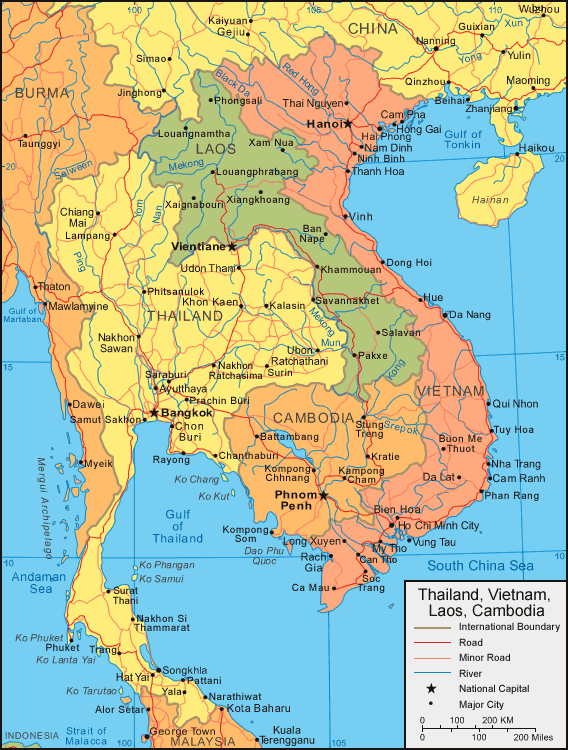1
Major Human Factions of the Third Human Civil War (2055-2077)
Socialist Republic of Vietnam
Motto: Independence. Freedom. Happiness.
Demonym: Vietnamese
Government: Unitary Socialist Republic
Capital: Ho Chi Minh City
Official Language: Vietnamese
Population (2055): 160,252,000
Population (2077): 5,287,210
Average Pop. Growth: 15.2%
Ethnic Breakdown: Viet 88.9%, Other 4.6%, Hmong 4%, 2.5% Chinese
Armed Forces (2055): 10,000,000
Armed Forces (At its Peak): 22,000,000
Men of Military Age (2055): 55,000,000
Branches: Vietnam People's Army, Vietnam People's Public Security, Vietnam Civil Defense Force
Economic System: Controlled Socialist Mixed Economy
HDI: 0.572
Gini (2054): 38
GDP (PPP): 4.2 Trillion
GDP (Nominal): 3.5 Trillion
Per Capita: 12,214 USD
Unemployment: 2.7%
Annual GDP Growth: 6.6%
Colonies: N/A
Vietnamese War Losses
2055-2077
NO RECORD
Total Military KIA: Unknown
Total Civilian KIA: Unknown
Total Economic Losses: Unknown
Total HDI Loss: Unknown
Total NAT Loss: Unknown
Vietnamese Leadership (2055-2077)
2051-2055: Prime Minister Nguyễn (CPV) – Popular Vietnamese PM that helped further align Vietnam with the West. Fully allying Vietnam with the United States, India, Taiwan, and Australia should China attack any of their nations. Him and his family were later killed during the Chinese invasion of Vietnam after the outbreak of WWIII by a PLAAF precision air strike.
2055-2059: General Huong (CPV) – Vietnam was divided and leaderless against the overwhelming Chinese Invasion and later its occupation forces. One former General rose and led the Vietnamese resistance against the PLA occupation. The reformed Vietcong was initially successful, but eventually the PLA's policy of genocide dwindled the Vietnamese people and manpower. General Huong was eventually caught by the PLA deep in the jungles that border Vietnam and Cambodia and was executed. His death in 2059 effectively ended the Vietnamese resistance.
HISTORY 2055-2077
The Vietnamese people which made up the Socialist Republic of Vietnam has had a long and complicated history with the people of China dating back as far as 300 B.C. when the two people's first encountered each other during China's Warring States Period. The Vietnamese and Chinese people fought between each other over the areas bordering their territories, but in 111 B.C. the Chinese had unified under the Han Dynasty and conquered Vietnam in its 1st Period of Chinese Domination (111 B.C. to 39 A.D.). Vietnam successfully revolted under the leadership of the Trung Sisters in 40 A.D., but it was short-lived as China reconquered Vietnam in 43 A.D. Vietnam remained under Chinese control in what became known as the 2nd Period of Chinese Domination until 544 A.D. In 544 A.D. Ly Nam De a Vietnamese born magistrate for China led a revolt that successfully freed Vietnam from Chinese domination. Ly Nam De became Vietnam's first true Emperor and his dynasty kept Vietnam free from China for nearly sixty years. In 602 A.D. China reasserted itself under the Sui Dynasty and retook Vietnam (3rd Period of Chinese Domination) and held it until 938 A.D. when Vietnam rebelled and crushed the Chinese at the Battle of Bach Dang River. After nearly a thousands years of almost uninterrupted Chinese rule Vietnam was independent until 1407 A.D. when the Chinese under the Ming Dynasty retook the country and subjugated it under a harsh regime that attempted to strip the Vietnamese of its culture and language. The Vietnamese again rebelled in 1427 A.D. and didn't see foreign occupation until 1887 A.D. when France seized the entire area as its colony. The French rule of the area ended in 1952 A.D. when Vietnam rebelled against the French (First Indochina War) and soundly defeated them at the Battle of Dien Bien Phu. This led to the partition of Vietnam into a Communist north and a Republic south. Immediately after North Vietnam entered into a bitter war with the United States of America known to history as the Vietnam War (Second Indochina War) as it invaded the South to attempt to reunify the country. The war ended in an American defeat and an armistice, but as soon as the U.S. withdrew the North invaded the South again and defeated it. Vietnam was united under the communist north and although it was supported by the Chinese in its war against the United States the relations between the two nations deteriorated. In 1979 the Sino-Vietnamese War broke out between the two nations and a brief but bloody conflict ensued. Chinese and Vietnamese relations stayed frosty for the next hundred years afterward.
Vietnam watched with concern as its ancient rival and oppressor China rapidly modernized and expanded its armed forces during the early 21st century. As the United States waned in power in the early 21st century the Chinese started to aggressively expand its territory using espionage, war, intimidation, economic manipulation, and cat paws to influence its neighbors into submission. Vietnam vehemently opposed this expansion and the growing power of China and began to align itself with both India and its former enemy the United States. It first normalized relations with the United States in the early 21st century, trade between the nations expanded by 600% and then Vietnam allowed the United States to use Ho Chi Minh City as a port for its naval warships. As time passed the U.S. and Vietnam both began to train and conduct joint military exercises in the Gulf of Tonkin and along the Vietnamese-Sino border. Soon India joined the exercises and Vietnam allowed the Republic of India to build a military base in Da Nang (2048) to help it encircle China and extend its reach into the South China Sea. This relationship between Vietnam and the Allies expanded greatly up until the outbreak of the Third Human Civil War on August.08, 2055 when the People's Liberation Army crossed into Vietnam and invaded Taiwan.
Vietnam had long expected a war to occur due to the large concentrations of PLA forces placed along their border with China and the intense buildup along the Chinese coastline opposite of Taiwan. The Vietnamese were prepared, but quickly overwhelmed by the sheer scale and technological prowess of the PLA. The first few hours of the war saw the PLA kill the Vietnamese Prime Minister in an airstrike and the leaderless Vietnamese Army getting smashed by the PLA. Within two days the Vietnamese capital of Hanoi was conquered and by the end of the second week of fighting all of Vietnam was under Chinese occupation. The Indian base in Da Nang continued to hold out for another two weeks, but eventually fell with the loss of all its soldiers. Immediately after the fall of Vietnam the PLA began to systematically exterminate or enslave the Vietnamese people. Many Vietnamese that could fled into the dense jungles and mountains of Vietnam and from there formed small bands of resistance. Initially these Vietnamese resistance groups were leaderless and ineffective until former General Huong slowly took command of the resistance. His family were from a long line of military men, his grandfather fighting the Americans in the Vietnam War and his father fighting the Chinese in the Sino-Vietnamese War who both instilled in him their combat knowledge and characteristic resiliency. In two years time he converted the ragtag resistance force into an effective guerrilla warfare that became a huge hindrance to the PLA occupation force in Indochina. This forced the Chinese to deploy more soldiers into Indochina and away from its war with India. The revived Vietcong would fight on until 2059 when General Huong was betrayed, tortured and then executed. The Vietcong continued to resist, but became fractured and eventually was defeated that same year.
The Chinese Hegemony went on with its campaign of extermination and by 2o70 had killed off nearly 98% of the Vietnamese population and had completely colonized Vietnam. Very few nations suffered as extensively as did Vietnam during the Third Human Civil War. Vietnam became a prime example of the “One Kingdom, Under One Heaven” plan that China had for the rest of the world.
Socialist Republic of Vietnam
Motto: Independence. Freedom. Happiness.
Demonym: Vietnamese
Government: Unitary Socialist Republic
Capital: Ho Chi Minh City
Official Language: Vietnamese
Population (2055): 160,252,000
Population (2077): 5,287,210
Average Pop. Growth: 15.2%
Ethnic Breakdown: Viet 88.9%, Other 4.6%, Hmong 4%, 2.5% Chinese
Armed Forces (2055): 10,000,000
Armed Forces (At its Peak): 22,000,000
Men of Military Age (2055): 55,000,000
Branches: Vietnam People's Army, Vietnam People's Public Security, Vietnam Civil Defense Force
Economic System: Controlled Socialist Mixed Economy
HDI: 0.572
Gini (2054): 38
GDP (PPP): 4.2 Trillion
GDP (Nominal): 3.5 Trillion
Per Capita: 12,214 USD
Unemployment: 2.7%
Annual GDP Growth: 6.6%
Colonies: N/A
Vietnamese War Losses
2055-2077
NO RECORD
Total Military KIA: Unknown
Total Civilian KIA: Unknown
Total Economic Losses: Unknown
Total HDI Loss: Unknown
Total NAT Loss: Unknown
Vietnamese Leadership (2055-2077)
2051-2055: Prime Minister Nguyễn (CPV) – Popular Vietnamese PM that helped further align Vietnam with the West. Fully allying Vietnam with the United States, India, Taiwan, and Australia should China attack any of their nations. Him and his family were later killed during the Chinese invasion of Vietnam after the outbreak of WWIII by a PLAAF precision air strike.
2055-2059: General Huong (CPV) – Vietnam was divided and leaderless against the overwhelming Chinese Invasion and later its occupation forces. One former General rose and led the Vietnamese resistance against the PLA occupation. The reformed Vietcong was initially successful, but eventually the PLA's policy of genocide dwindled the Vietnamese people and manpower. General Huong was eventually caught by the PLA deep in the jungles that border Vietnam and Cambodia and was executed. His death in 2059 effectively ended the Vietnamese resistance.
HISTORY 2055-2077
The Vietnamese people which made up the Socialist Republic of Vietnam has had a long and complicated history with the people of China dating back as far as 300 B.C. when the two people's first encountered each other during China's Warring States Period. The Vietnamese and Chinese people fought between each other over the areas bordering their territories, but in 111 B.C. the Chinese had unified under the Han Dynasty and conquered Vietnam in its 1st Period of Chinese Domination (111 B.C. to 39 A.D.). Vietnam successfully revolted under the leadership of the Trung Sisters in 40 A.D., but it was short-lived as China reconquered Vietnam in 43 A.D. Vietnam remained under Chinese control in what became known as the 2nd Period of Chinese Domination until 544 A.D. In 544 A.D. Ly Nam De a Vietnamese born magistrate for China led a revolt that successfully freed Vietnam from Chinese domination. Ly Nam De became Vietnam's first true Emperor and his dynasty kept Vietnam free from China for nearly sixty years. In 602 A.D. China reasserted itself under the Sui Dynasty and retook Vietnam (3rd Period of Chinese Domination) and held it until 938 A.D. when Vietnam rebelled and crushed the Chinese at the Battle of Bach Dang River. After nearly a thousands years of almost uninterrupted Chinese rule Vietnam was independent until 1407 A.D. when the Chinese under the Ming Dynasty retook the country and subjugated it under a harsh regime that attempted to strip the Vietnamese of its culture and language. The Vietnamese again rebelled in 1427 A.D. and didn't see foreign occupation until 1887 A.D. when France seized the entire area as its colony. The French rule of the area ended in 1952 A.D. when Vietnam rebelled against the French (First Indochina War) and soundly defeated them at the Battle of Dien Bien Phu. This led to the partition of Vietnam into a Communist north and a Republic south. Immediately after North Vietnam entered into a bitter war with the United States of America known to history as the Vietnam War (Second Indochina War) as it invaded the South to attempt to reunify the country. The war ended in an American defeat and an armistice, but as soon as the U.S. withdrew the North invaded the South again and defeated it. Vietnam was united under the communist north and although it was supported by the Chinese in its war against the United States the relations between the two nations deteriorated. In 1979 the Sino-Vietnamese War broke out between the two nations and a brief but bloody conflict ensued. Chinese and Vietnamese relations stayed frosty for the next hundred years afterward.
Vietnam watched with concern as its ancient rival and oppressor China rapidly modernized and expanded its armed forces during the early 21st century. As the United States waned in power in the early 21st century the Chinese started to aggressively expand its territory using espionage, war, intimidation, economic manipulation, and cat paws to influence its neighbors into submission. Vietnam vehemently opposed this expansion and the growing power of China and began to align itself with both India and its former enemy the United States. It first normalized relations with the United States in the early 21st century, trade between the nations expanded by 600% and then Vietnam allowed the United States to use Ho Chi Minh City as a port for its naval warships. As time passed the U.S. and Vietnam both began to train and conduct joint military exercises in the Gulf of Tonkin and along the Vietnamese-Sino border. Soon India joined the exercises and Vietnam allowed the Republic of India to build a military base in Da Nang (2048) to help it encircle China and extend its reach into the South China Sea. This relationship between Vietnam and the Allies expanded greatly up until the outbreak of the Third Human Civil War on August.08, 2055 when the People's Liberation Army crossed into Vietnam and invaded Taiwan.
Vietnam had long expected a war to occur due to the large concentrations of PLA forces placed along their border with China and the intense buildup along the Chinese coastline opposite of Taiwan. The Vietnamese were prepared, but quickly overwhelmed by the sheer scale and technological prowess of the PLA. The first few hours of the war saw the PLA kill the Vietnamese Prime Minister in an airstrike and the leaderless Vietnamese Army getting smashed by the PLA. Within two days the Vietnamese capital of Hanoi was conquered and by the end of the second week of fighting all of Vietnam was under Chinese occupation. The Indian base in Da Nang continued to hold out for another two weeks, but eventually fell with the loss of all its soldiers. Immediately after the fall of Vietnam the PLA began to systematically exterminate or enslave the Vietnamese people. Many Vietnamese that could fled into the dense jungles and mountains of Vietnam and from there formed small bands of resistance. Initially these Vietnamese resistance groups were leaderless and ineffective until former General Huong slowly took command of the resistance. His family were from a long line of military men, his grandfather fighting the Americans in the Vietnam War and his father fighting the Chinese in the Sino-Vietnamese War who both instilled in him their combat knowledge and characteristic resiliency. In two years time he converted the ragtag resistance force into an effective guerrilla warfare that became a huge hindrance to the PLA occupation force in Indochina. This forced the Chinese to deploy more soldiers into Indochina and away from its war with India. The revived Vietcong would fight on until 2059 when General Huong was betrayed, tortured and then executed. The Vietcong continued to resist, but became fractured and eventually was defeated that same year.
The Chinese Hegemony went on with its campaign of extermination and by 2o70 had killed off nearly 98% of the Vietnamese population and had completely colonized Vietnam. Very few nations suffered as extensively as did Vietnam during the Third Human Civil War. Vietnam became a prime example of the “One Kingdom, Under One Heaven” plan that China had for the rest of the world.



